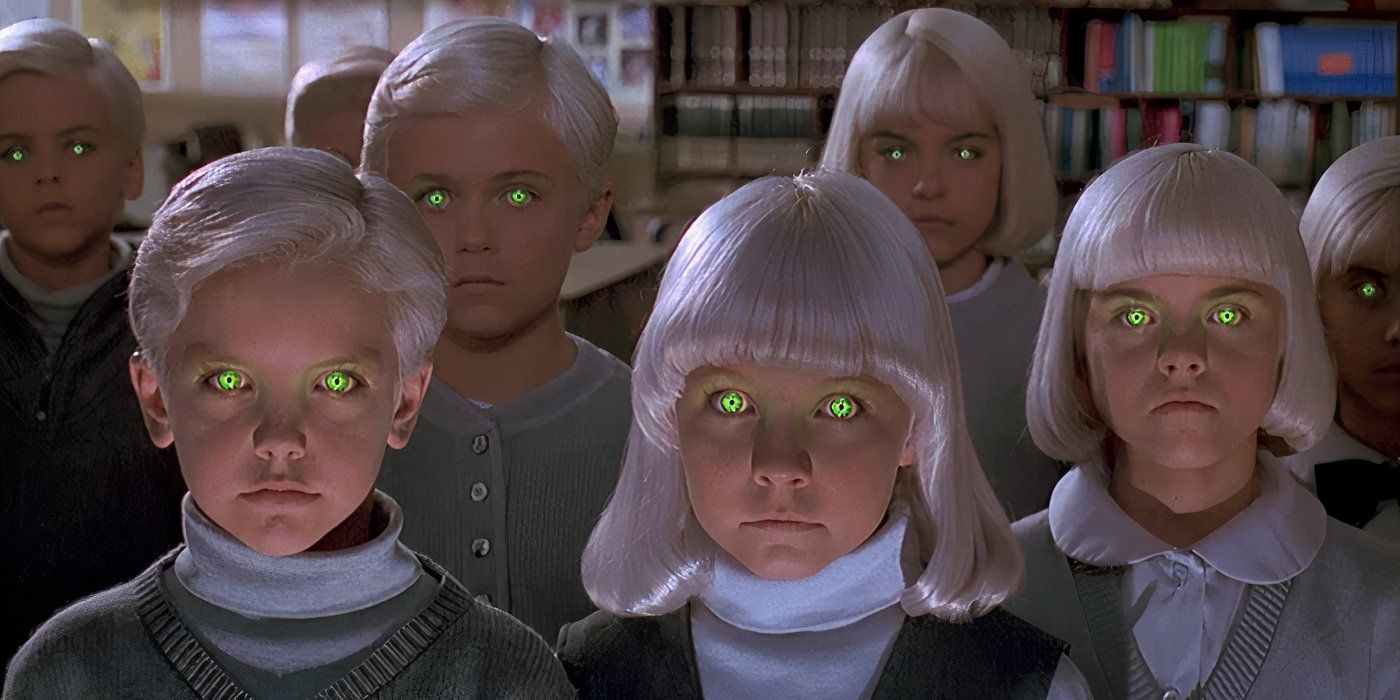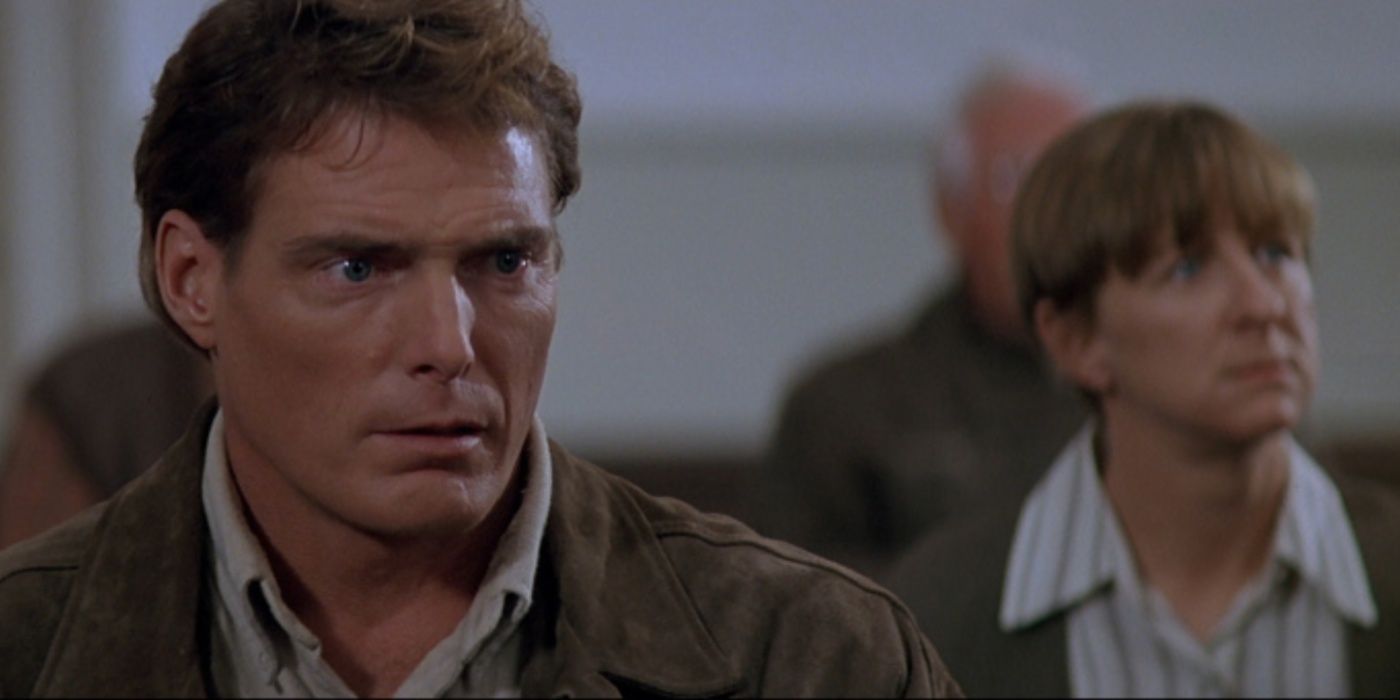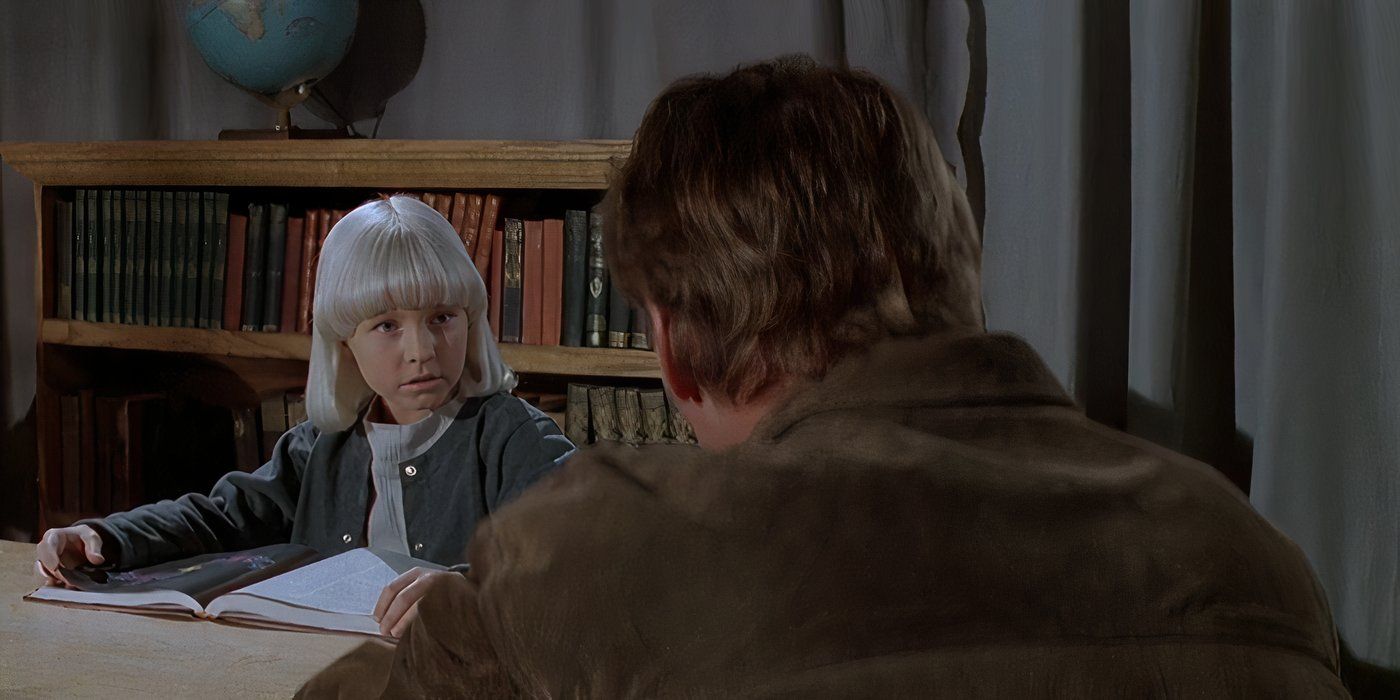
There are certain directors who should undeniably be enshrined among the greats in the horror genre, and John Carpenter is certainly one of them. Renowned for his work on timeless classics such as Halloween and The Thing, he has perfected the technique of gradually escalating tension (and let’s not forget about those memorable soundtracks). Fans of Carpenter extend far beyond his two most famous films, with movies like Christine, They Live, and Escape From New York also gaining recognition from both horror enthusiasts and general audiences. However, one of his works has yet to receive the attention it deserves – that film is the 1995 release Village of the Damned.
The “Village of the Damned” is skillfully crafted in direction and editing, boasting a compelling narrative. The standout element is the distinctive aesthetic of its “monsters,” chilling blonde children with remarkable intellects. These unyielding kids command every scene and are frightening enough to challenge Reagan MacNeil from “The Exorcist.” It’s been three decades since the release of “Village of the Damned,” but the film remains one of John Carpenter’s least recognized and valued works.
Viewers Will Be Terrified by the Creepy Children in Village of the Damned


The film titled “Village of the Damned” is a modern retelling of a 1960 movie with the same name, which was based on an original story. This chilling tale revolves around a tranquil Californian coastal town, where something eerie occurs: women inexplicably give birth to blonde children with peculiar features, following an unexplained blackout. These 10 children, consisting of five boys and five girls, share striking characteristics like golden corn silk hair, pale skin, and eyes that change colors from green to red when they’re upset or angry. What sets these kids apart is their extraordinary intelligence, which becomes alarming as mysterious incidents begin to unfold in the town. A doctor named Dr. Alan, portrayed by Christopher Reeve, and the school’s staff are left grappling with this strange phenomenon.
It might appear that these spontaneously appearing blonde children are completely harmless, even miraculous to some observers. However, it soon becomes evident that these kids are unlike any others we know. When they’re distressed or in pain, they exhibit disturbing psychic abilities that cause quite a stir within the town. For example, there’s a scene where a grumpy janitor named Carlton (played by George Buck Flower) walks into a classroom, and all the blonde children sitting at their desks simultaneously turn to face him. Suspicious of these kids, Carlton accuses them of causing chaos and turmoil in the town, waving his broom menacingly at the children as he taunts them.
It’s evident that the children dislike encountering Carlton. In one of the movie’s most chilling scenes, they synchronize in rising from their seats behind their desks. The camera focuses on their eyes, which transform to green, hinting to the viewers that they are controlling Carlton against his will. What makes it frightening is that his consciousness remains, allowing him to understand he’s being coerced to climb a ladder backwards and onto the roof. In the climax, Carlton leans the broom against himself, and as soon as the children’s eyes glow red, he plummets off the roof through a car windshield, getting impaled on the broom.
This scene vividly illustrates why “Village of the Damned” stands out among John Carpenter’s works. It shares the gradual, suspenseful escalation of fear characteristic of other Carpenter films, while also incorporating some quirkier, humorous aspects. The child actors portray an eerie, malevolent charm and move in unison during their chilling attack on the janitor. Prior to this scene, there had been various mishaps throughout town, but it’s this sequence that truly underscores why the film should be recognized as a significant addition to Carpenter’s body of work.
Poor Reviews and a Dismal Box Office Return Hurt the Film’s Chances
John Carpenter often incorporates a touch of science fiction into his most renowned works. Notably, “Village of the Damned” explores this theme further, delving into another genre as well. In essence, it’s similar to an expanded…
Regrettably, critics haven’t been kind to the latest adaptation of “Village of the Damned.” At present, it holds a low 29% rating on Rotten Tomatoes, suggesting a majority of critics found it disappointing. Critics were particularly underwhelmed due to its subpar comparison with the original film. Additionally, the movie’s domestic box office earnings were modest, totaling only slightly over $9 million. While the 1960 version of “Village of the Damned” is indeed exceptional, it might be premature to completely dismiss this new interpretation.
In the movie “Halloween,” Carpenter effectively makes suburbia seem ominous and frightening. Similarly, in his adaptation of “Damned,” he switches the location from England to a modern-day Californian town called Midwich in Marin County. This setting gives off an eerie vibe as if the creepy blonde children could suddenly appear in any viewer’s own backyard. Interestingly, Carpenter lived in the area and filmed the movie on location, adding to its realism. Surprisingly, filming had to be halted occasionally due to distractions like a neighbor mowing the lawn or a chainsaw starting up to cut down trees.
Apart from that alteration, John Carpenter also made several other changes to the script. His primary goal was to make the characters seem more authentic, particularly the women who had given birth to the blonde children, as stated by the director himself.
I recognize the need for modernization in this project, giving it a more personal touch by enriching the characters. Back when it was first created, certain topics like pregnancy were taboo and thus, birth scenes and female characters weren’t handled as we can today.
It’s unfortunate that this movie didn’t resonate well with critics and viewers when it first released. However, looking back now, the town seems authentic, and the characters are well-developed. Although it might not surpass the original in quality, it stands independently as a compelling film. The tension is palpable, and there’s an eerie ambiance that pervades the storyline. Interestingly enough, Village of the Damned even manages to be somewhat humorous.
Village of the Damned May Deserve Another Chance
Critics have drawn parallels between “Village of the Damned” and certain other movies. They’ve even gone so far as to criticize the film for being uninteresting, lacking pizzazz, and failing to match up to Carpenter’s other works. With three decades having passed since its initial release, it might be worth another look.
Some critics, such as Janet Maslin from The New York Times, have praised Village of the Damned as John Carpenter’s top horror film in a while, while Roger Ebert awarded it three out of four stars, commending its ability to create tension and immerse viewers in an ominous and atmospheric setting.
It’s understandable that other critics didn’t take a liking to the movie, given that John Carpenter himself considered it a required obligation and not a project he was deeply invested in. Yet, a filmmaker of his talent can never completely detach themselves from their work, even when they don’t give it their all. Despite its flaws or merits, The Village of the Damned remains a decently acted and enjoyable horror movie.
It remains to be seen if the remake of “Village of the Damned” will capture its intended audience. John Carpenter, who watched the original when he was 12 years old, sought to update it for contemporary horror enthusiasts. Despite some negative reviews and poor box office performance, the film continues to be relevant thirty years later, and it’s worth revisiting. After watching this movie, viewers may never view blonde children in the same light again!
Read More
- Who Is Harley Wallace? The Heartbreaking Truth Behind Bring Her Back’s Dedication
- 50 Ankle Break & Score Sound ID Codes for Basketball Zero
- Here’s Why Your Nintendo Switch 2 Display Looks So Blurry
- 50 Goal Sound ID Codes for Blue Lock Rivals
- 100 Most-Watched TV Series of 2024-25 Across Streaming, Broadcast and Cable: ‘Squid Game’ Leads This Season’s Rankers
- Elden Ring Nightreign Enhanced Boss Arrives in Surprise Update
- How to play Delta Force Black Hawk Down campaign solo. Single player Explained
- Jeremy Allen White Could Break 6-Year Oscars Streak With Bruce Springsteen Role
- MrBeast removes controversial AI thumbnail tool after wave of backlash
- Mirren Star Legends Tier List [Global Release] (May 2025)
2025-05-31 03:08